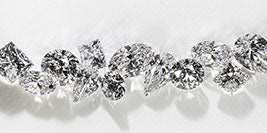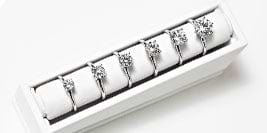As pioneers of the lab grown diamond industry, we have always known that created diamonds would become mainstream. Over the years, we’ve worked with the finest, most reputable laboratories to grow the best quality diamonds. With the increase in popularity of lab grown diamonds comes a surge of companies who want to capitalize on the monetary opportunities, without considering the best interest of consumers. Unfortunately, some new companies are taking advantage of people by selling lower quality diamonds with the sole purpose of increasing their bottom line.
The first big distinction between lab grown diamond quality is the method in which they are created.
There are currently two practices for growing diamonds, High Pressure High Temperature (HPHT) and Chemical Vapor Deprivation (CVD). CVD is known to produce higher quality lab grown diamonds that are near colorless. HPHT diamonds tend to be more brown or yellow in color. The CVD method also uses less electricity than HPHT so it is better for the environment. MiaDonna diamonds are primarily grown with the CVD method to ensure better color and environmental practices.
As more companies start offering lab grown diamonds, we have noticed that more low quality lab diamonds are entering the marketplace. Many labs, primarily those in Asia and India, are pushing out diamonds with a focus on production quantity instead of quality.
Just like in nature, no two lab grown diamonds are created exactly 100% identically. There are varying levels of inclusions and color variations. In the example below, we show a MiaDonna 1.02ct lab grown diamond with a color grading of H and clarity of SI2. The other sample is from a non-MiaDonna lab and is also graded as 1.02ct, H color, SI2 clarity. As you can see, the other diamond contains visible inclusions despite having an identical grade and does not meet the high standards of the lab grown diamonds available for purchase at MiaDonna. We always tell consumers to make sure any diamond over 0.3ct comes with a grading certificate, but clearly, that is not always enough. Trusting the company you’re buying from is important to ensure your diamond matches what is on the grading report.
It’s incredibly important for consumers to do their homework. Make sure you are ordering from a reputable company with a long history of selling the highest quality lab created diamonds. Make sure you ask where a diamond is grown, and order from a company with a return policy in case the quality does not meet your standards. At MiaDonna we only work with reputable growers so we can ensure our customers receive the highest quality stones; we will work with you to make sure you receive the quality you deserve, at an affordable price for your forever ring!





























